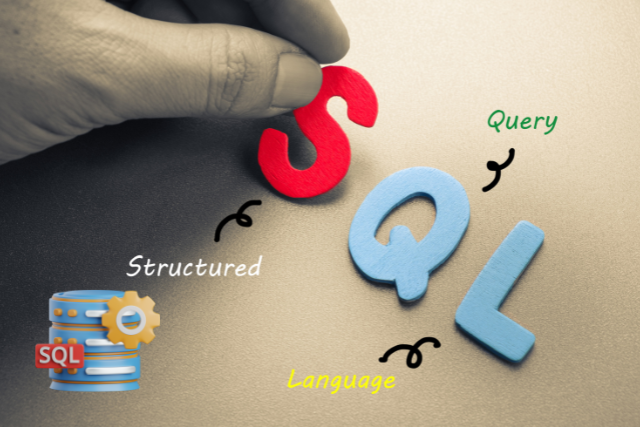C# is a powerful and versatile programming language widely used for developing applications on the .NET framework. Whether you are a seasoned developer or just starting, preparing for a C# developer interview requires a solid understanding of core concepts and demonstrating your knowledge effectively.
This guide covers the top 40 C# interview questions, providing a comprehensive resource to help you succeed in your following interview.
Introduction to C# and .NET Framework
C# is a modern, object-oriented programming language developed by Microsoft. It is an integral part of the .NET framework, which provides a comprehensive platform for building robust and scalable applications. C# is widely used in various domains, including web development, desktop applications, game development, and mobile apps.
With strong typing, automatic garbage collection, and extensive libraries, C# enables developers to write clean, maintainable, and efficient code.
Key Features of C#
- Object-Oriented: C# supports the four main principles of object-oriented programming: encapsulation, inheritance, polymorphism, and abstraction.
- Type-Safe: C# enforces strict type safety, reducing the likelihood of runtime errors.
- Garbage Collection: Automatic memory management helps prevent memory leaks.
- Rich Library Support: The .NET framework provides an extensive set of libraries for various tasks.
- Platform Independence: With .NET Core, C# applications can run on multiple platforms, including Windows, macOS, and Linux.
Top 40 C# Interview Questions
1. What is C#?
C# is a simple, modern, object-oriented programming language developed by Microsoft as part of its .NET initiative. It is designed to build a wide range of enterprise applications running on the .NET framework.
2. What are the fundamental principles of object-oriented programming in C#?
The four main principles are:
- Encapsulation: Bundling the data and methods that operate on the data within a single unit (class).
- Inheritance: The ability to create new classes from existing ones, inheriting fields and methods.
- Polymorphism: The ability to process objects differently based on their data type or class.
- Abstraction: Hiding complex implementation details and showing only the necessary features of an object.
3. What is the .NET framework?
The .NET framework is a software development platform developed by Microsoft. It provides a controlled environment for the development and execution of applications, including services like memory management, security, and exception handling.
4. What is managed code in .NET?
Managed code is executed by the Common Language Runtime (CLR) in the .NET framework. The CLR provides various services such as garbage collection, exception handling, and type safety.
5. Explain the concept of garbage collection in C#.
Garbage collection is the automatic memory management feature of the .NET framework. It reclaims memory occupied by objects no longer in use, thus preventing memory leaks and optimizing performance.
6. What are assemblies in .NET?
An assembly is a compiled code library for deployment, versioning, and security in .NET applications. It contains one or more files, such as DLLs or EXEs, and metadata about the types defined in the assembly.
7. What is the difference between a class and an object in C#?
A class is a blueprint or template for creating objects. It defines the properties, methods, and events of objects. An object is an instance of a class. It represents a specific implementation of the class with actual values.
8. What are value types and reference types in C#?
Value types such as int, char, and float hold their value directly. Reference types are types that have a reference to the value’s memory address, such as objects and strings.
9. What is the difference between a struct and a class in C#?
A struct is a value type usually used for small data structures containing primary data. A class is a reference type used for complex data structures that may include data and behaviour.
10. What is a namespace in C#?
A namespace is a container that holds a set of related classes, interfaces, structs, and enums. Namespaces are used to organize code and prevent name conflicts.
11. What is inheritance in C#?
Inheritance is a feature of object-oriented programming that allows a class to inherit properties and methods from another class. The class that inherits is called a derived class, and the class it inherits from is called a base class.
12. Explain polymorphism in C#.
Polymorphism is the ability of different classes to be treated as instances of the same class through inheritance. It allows methods to be used interchangeably between different objects.
13. What is method overloading in C#?
Method overloading is the ability to define multiple methods with the same name but with different parameters. It allows a class to perform a similar operation in different ways.
14. What is method overriding in C#?
Method overriding is the process of redefining a method in a derived class that already exists in the base class. The method in the derived class must have the same name, return type, and parameters as the method in the base class.
15. What is an interface in C#?
An interface is a contract that defines a set of methods and properties without implementing them. Classes and structs can implement interfaces to provide the actual implementation of the methods and properties.
16. What is an abstract class in C#?
An abstract class is a class that cannot be instantiated and is designed to be inherited by other classes. It can contain abstract methods, which are methods without implementation, and concrete methods, which are fully implemented.
17. What are delegates in C#?
A delegate is a type that represents references to methods with a specific parameter list and return type. Delegates are used to pass methods as arguments to other methods and to define callback methods.
18. What is an event in C#?
An event is a message sent by an object to signal the occurrence of an action. Events are used to provide notifications. They are based on the delegate model.
19. What is the difference between the “throw” and “throw ex” in C#?
The throw statement rethrows the original exception, preserving the original stack trace. The throw ex statement throws a new exception, resetting the stack trace, which can make debugging more difficult.
20. What are generics in C#?
Generics allow you to define classes, methods, and delegates with a placeholder for the type they operate on. Generics increase code reusability and type safety.
21. What is LINQ in C#?
LINQ (Language Integrated Query) is a set of features in C# that provides query capabilities to .NET languages. It allows querying of collections like arrays, lists, and databases in a concise and readable manner.
22. What is the difference between “var” and “dynamic” in C#?
The var keyword is used for implicitly typed variables, where the type is determined at compile time. The dynamic keyword bypasses compile-time type checking, with the type resolved at runtime.
23. What are extension methods in C#?
Extension methods allow you to add new methods to existing types without modifying the original type. They are defined as static methods in a static class but are called as if they were instance methods.
24. What is async and await in C#?
Async and await are keywords used to write asynchronous code more easily. The async keyword is used to declare a method as asynchronous, and the await keyword is used to wait for an asynchronous operation to complete.
25. What is dependency injection in C#?
Dependency injection is a design pattern that allows an object to receive its dependencies from an external source rather than creating them itself. It promotes loose coupling and makes the code more testable and maintainable.
26. What is the difference between “string” and “StringBuilder” in C#?
The string type is immutable, meaning once created, it cannot be changed. The StringBuilder class is mutable, allowing you to modify the string without creating new instances, which is more efficient for frequent modifications.
27. What is a thread in C#?
A thread is a path of execution within a program. Multithreading allows multiple threads to run concurrently, making better use of CPU resources and improving performance for tasks like background processing.
28. What are collections in C#?
Collections are data structures that hold multiple objects. Common collection types include arrays, lists, dictionaries, queues, and stacks. The System.Collections namespace provides various collection classes.
29. What is the purpose of the “using” statement in C#?
The using statement is used to ensure that resources are properly disposed of when they are no longer needed. It is often used with objects that implement the IDisposable interface, such as file streams and database connections.
30. What is the difference between “const” and “readonly” in C#?
The const keyword defines a constant whose value cannot be changed and must be assigned at compile time. The readonly keyword defines a field that can only be assigned a value at declaration or in the constructor, making it effectively constant after construction.
31. What is a partial class in C#?
A partial class allows you to split the definition of a class across multiple files. It is useful for managing large classes or for separating auto-generated code from custom code.
32. What is reflection in C#?
Reflection is the ability of a program to examine and manipulate its own structure and behavior at runtime. It is commonly used for accessing metadata, inspecting assemblies, and invoking methods dynamically.
33. What is an attribute in C#?
An attribute is a way to add metadata to your code. Attributes can be applied to assemblies, classes, methods, properties, and other elements to provide additional information that can be accessed at runtime using reflection.
34. What is a lambda expression in C#?
A lambda expression is a concise way to represent an anonymous method. It is often used with LINQ queries and delegates to create inline functions.
35. What is the difference between “==” and “Equals()” in C#?
The == operator checks for reference equality for reference types and value equality for value types. The Equals() method can be overridden to provide a custom equality comparison, making it more suitable for value comparison.
36. What is the purpose of the “sealed” keyword in C#?
The sealed keyword is used to prevent a class from being inherited. It can also be used on methods to prevent them from being overridden in derived classes.
37. What is the difference between “is” and “as” operators in C#?
The is operator checks if an object is of a specific type and returns a boolean value. The as operator attempts to cast an object to a specific type and returns null if the cast fails, rather than throwing an exception.
38. What is the difference between “Dispose” and “Finalize” in C#?
The Dispose method is used to explicitly release unmanaged resources and is called by the developer. The Finalize method is used by the garbage collector to release unmanaged resources when an object is no longer accessible.
39. What is a tuple in C#?
A tuple is a data structure that can hold multiple values of different types. It provides a way to return multiple values from a method without using out parameters.
40. What is the difference between “IEnumerable” and “IQueryable” in C#?
IEnumerable is used for in-memory collections and supports simple iteration over a collection of objects. IQueryable is used for querying data from out-of-memory sources like databases and provides more advanced querying capabilities.
FAQs
1. What is the primary use of C# in development?
C# is primarily used for developing applications on the .NET framework, including web applications, desktop applications, mobile apps, and games.
2. How does C# support object-oriented programming?
C# supports object-oriented programming through encapsulation, inheritance, polymorphism, and abstraction, allowing developers to create modular and reusable code.
3. What makes C# different from other programming languages?
C# combines the simplicity of Visual Basic with the power of C++, and it provides strong support for modern programming practices like garbage collection, type safety, and asynchronous programming.
4. What is the significance of the .NET framework in C# development?
The .NET framework provides a comprehensive platform for C# development, offering a vast library of pre-built functionalities, runtime environments, and tools for building robust applications.
5. How does garbage collection improve performance in C#?
Garbage collection automatically manages memory, freeing up no longer needed resources, thus preventing memory leaks and optimizing application performance.
6. What are some typical real-world applications of C#?
C# is used in various real-world applications, including enterprise software, web services, game development using Unity, mobile apps with Xamarin, and cloud-based services with Azure.
By familiarizing yourself with these questions and concepts, you’ll be well-prepared for your C# developer interview. Good luck!







